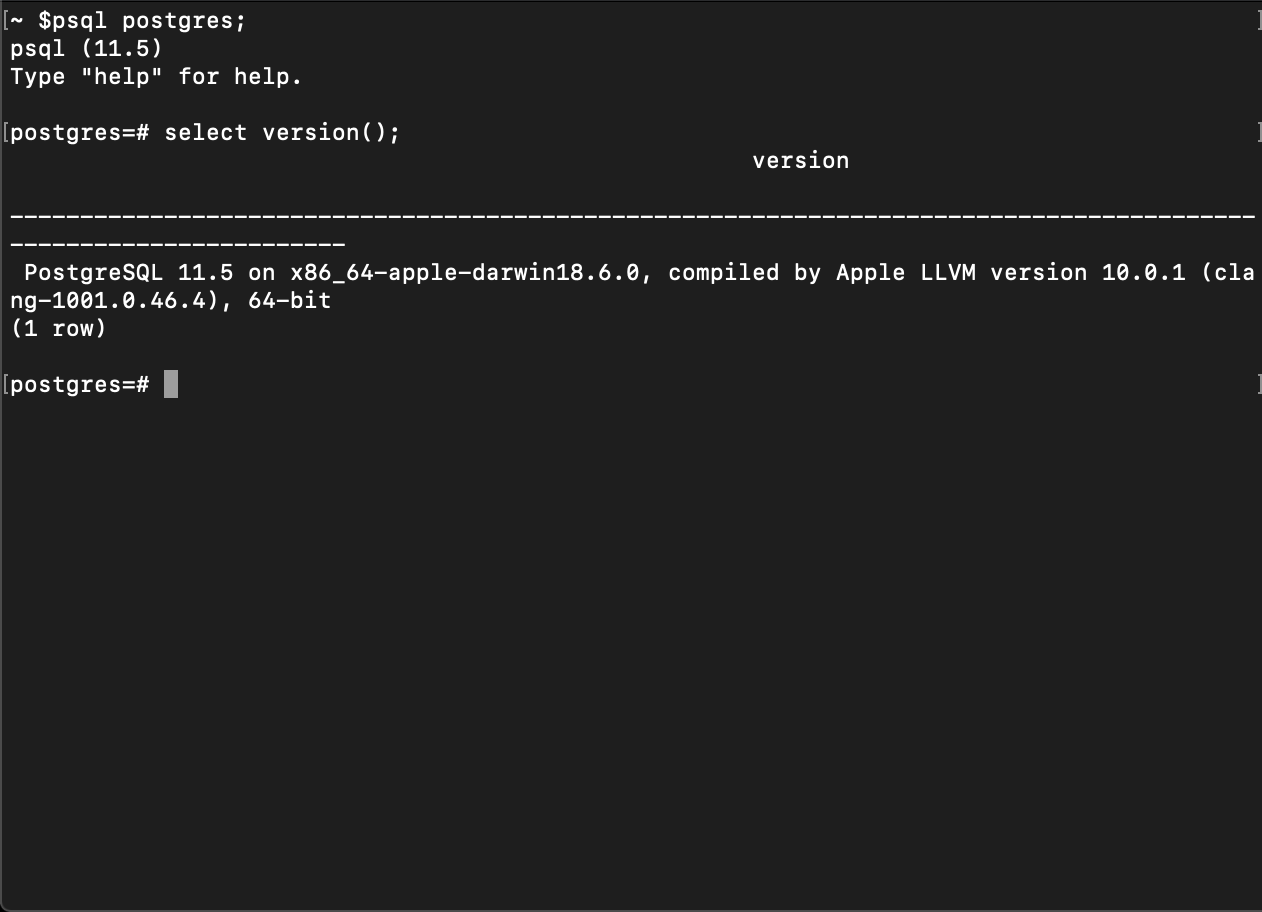

Postgres=#WITH RECURSIVE cte AS ( SELECT emp_no, ename, manager_no, 1 AS level FROM test_table where manager_no is null UNION ALL SELECT e.emp_no, e.ename, e.manager_no, c.level + 1 FROM cte c JOIN test_table e ON e.manager_no = c.emp_no ) SELECT * FROM cte With the help of common table expressions (CTE):.Postgres=# copy dummy_table from '/tmp/abc.txt' Importing data from a text file into a table Postgres=# copy dummy_table to '/tmp/abc.txt' Exporting data from a table to a text file

With the help of the COPY command, we can export data from a table to an outside text file as well as import data from a text file into a table. Exporting query result to a text file in PostgreSQL Postgres=# create or replace function f(n int)ĭeclaring a variable and using it in a SELECT INTO statementġ9. To avoid such errors, we can either use PERFORM or declare a variable and use it in a SELECT INTO statement: Using PERFORM HINT: If you want to discard the results of a SELECT, use PERFORM instead. Postgresql=# create or replace function f(n int)ĮRROR: query has no destination for result data Say that while selecting a given function, we receive the error message below: When a query has no destination for result data in PostgreSQL Postgres=# delete from dummy_table where age=65 ġ8. In this example, we are deleting one row whose age column has the value 65: It can be used with or without the optional WHERE condition, but take note: if the WHERE condition is missing, the command will delete all rows, leaving you with an empty table. The DELETE command is used to delete row(s). It is always recommended to perform such operations under transaction blocks (i.e., BEGIN.COMMIT/ROLLBACK ), so we have the option to roll back the operation.

Postgresql select database update#
Postgres=# update dummy_table set age=30 where name='XYZ' returning age as age_no Postgres=# update dummy_table set age=54,address='location-X' Ī RETURNING clause returns the updated rows. If we want to modify all the values in the address and age columns in dummy_table, then we do not need to use the WHERE clause. Postgres=# update dummy_table set name='GHI',age=54 where address='location-D' Next, we’ll use the UPDATE command to change the name and age of a person whose address is ‘location-D’: Postgres=# update dummy_table set age=50 where name='PQR' In the example below we use UPDATE to change the age of a person whose name is ‘PQR’: UPDATE is used to make updates to the data or row(s) of a database table.

If we check the PostgreSQL documentation of the INSERT statement, its conformity to the SQL standard is discussed in the page’s Compatibility section: Postgres=# insert into tyu values(1),(2) returning * īut to be compliant with the ANSI standard, all databases support commands (like DELETE, UPDATE, SELECT, INSERT) in the same way-that is, the syntax should work anywhere. For example, in PostgreSQL we can perform an INSERT operation using RETURNING clauses, which not all other databases can bin]$. SQL follows ANSI/ISO standards, but there are different versions of the SQL language used by different database systems. More information about the ANSI standard can be found on the SQL Wikipedia page. For each RDBMS to be compliant with the ANSI standard, they all have to support the major commands, like DML, in a similar manner as closely as possible. The American National Standards Institute (ANSI) created a standard for SQL in 1986, and it was adopted by the International Organization for Standardization (ISO) in 1987.


 0 kommentar(er)
0 kommentar(er)
